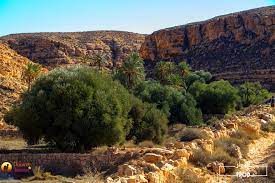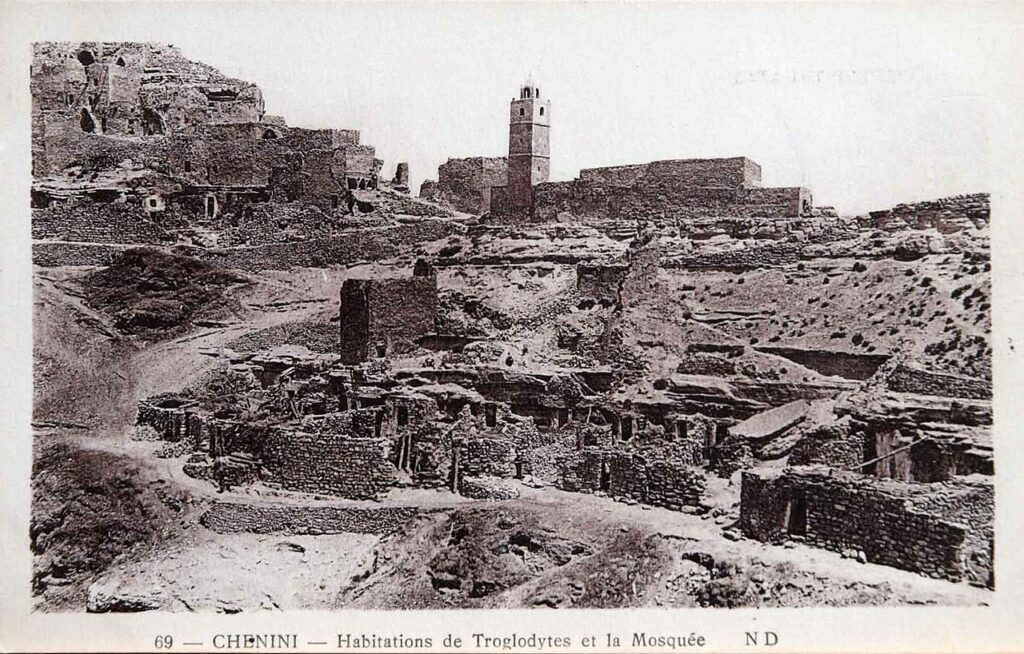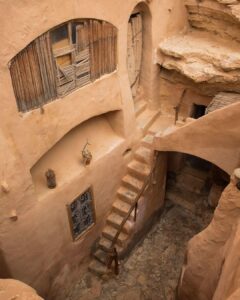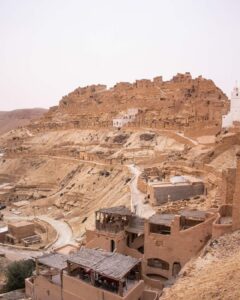Mountain Olive Festival in Chenni and Tataouine
The Chenni region is one of the favorite tourist destinations in southern Tunisia for its rich and diverse heritage stock, in addition to the availability of important historical landmarks such as mountain houses dug deep into the mountain between the layers of rocks with careful selection of the site according to physical, geological and geographical calculations that provide comfort, security, safety and tranquility
The walls of these houses are painted with gypsum to combat insects and maintain the temperature and humidity rate to keep the house cool in summer and warm in winter. They usually consist of a tomb, a closet, and a shop
Mountain houses with a distinctive architectural character
The mountain house, or “Ghar” or “ergi” as it is called by a number of people in these areas, has become a source of livelihood for a number of people who have rehabilitated it to become a tourist accommodation that receives guests to Tataouine to enjoy the beauty of the mountainous areas and eat traditional foods. These houses are very popular with tourists
Others have chosen to preserve their homes as part of the history and memory of their ancestors by maintaining and restoring them and sometimes taking refuge in them
The Seven Rukud Mosque
Among the important monuments in the region is the Seven Rukud Mosque, which is an archaeological site that legend indicates that it bears all the signs referred to by the Quran in Surat Al-Kahf about the place where the seven boys mentioned in the Surah, not to mention that the sun daily visits the opening of the mosque on the right at sunrise, and lends it to the north if it sets, meaning that the sun tilts away from the cave opening at sunrise and does not hit it at sunset
The silo of the mosque also tilts its center in a slight curve towards the direction of the qibla, and the location of the mosque is in the middle of two mountains, which corresponds to what is mentioned in the Quran, according to the legend
In addition, it is one of the oldest houses of God in the region and is surrounded by the tombs of a number of righteous saints and large graves that exceed 4 meters in height
Historic olive presses
The Chenni region has many old presses that were built by the locals in a cave deep in the mountain more than 300 years ago and preserved all its components and secured every year the process of squeezing the olives of the people of the region and some families of the state and from neighboring states due to the quality of the oil it produces and its characterized by several characteristics, most notably preserving the same taste and taste for a long period of time
It is noteworthy that the pressing process is done in primitive ways, where a blindfolded “camel” moves the wind to squeeze the olive kernels, after which the oil is filtered from the “fitora In another traditional way
The region is characterized by a special harvesting method, as the season starts in January, and the locals are content with picking the kernels scattered under the trees, given the difficulty of the harvesting process due to the branching of the branches of the trees, their density and the inability to reach their limbs, as the region has olive trees that exceed 900 years old
Residents use “khawabi” to store oil in dark rooms to preserve the quality of the oil for a long time
All these features have made the Chenni region a tourist destination, and the University of Authentic Tourism has prepared a participation file in the global competition to choose the best tourist village in the world, and the results are expected to be announced in the coming period, and the people hope that Chenni will be crowned for further investment in the tourism sector
Quoted by Habib Al-Shaabani from the Mosaique FM page





